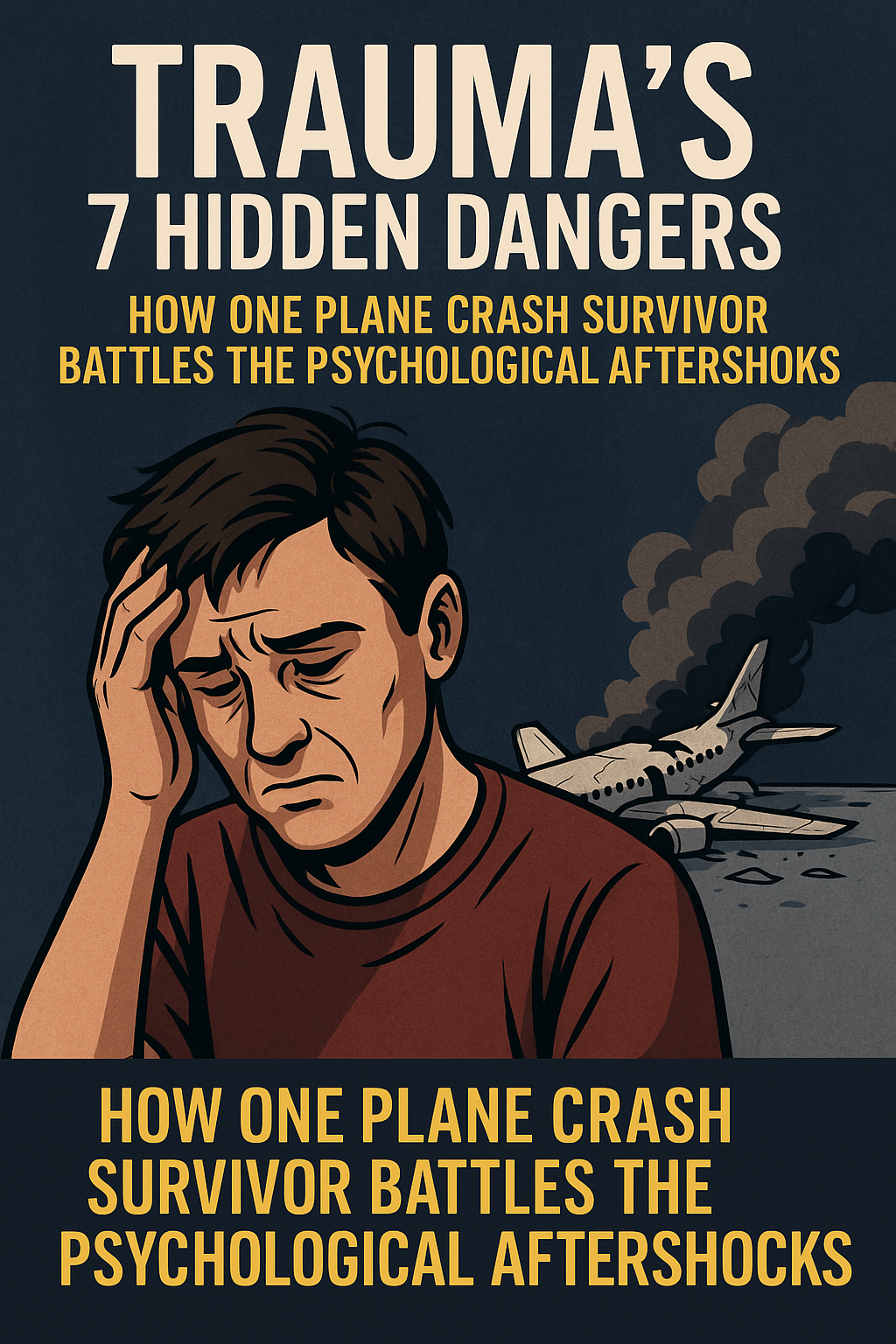
Trauma’s 7 Hidden Dangers: How One Plane Crash Survivor Battles the Psychological Aftershocks
Introduction: Living Through the Unimaginable
When an Air India flight tragically crashed, claiming the lives of nearly everyone on board, one passenger emerged as the sole survivor. While this might appear miraculous, surviving such a catastrophic event often brings immense emotional and psychological burdens. The aftermath of survival is layered with guilt, confusion, fear, and a unique form of trauma that reshapes every aspect of life.
In this blog, we explore how such a traumatic event impacts a survivor’s mental health and what can be done to support healing and recovery. We dive deep into the psychology of survival, post-traumatic stress, survivor’s guilt, and the importance of therapeutic intervention.
The Immediate Shock and Emotional Affect
Right after surviving a plane crash, a person typically enters a state of psychological shock. The brain and body go into survival mode—numbness, dissociation, and confusion are common. Witnessing lifeless bodies, the devastation around, and the knowledge of being the only one left alive triggers intense emotional responce.
These initial responses are the body’s way of coping with extreme stress. However, if not addressed, they can spiral into chronic trauma, affecting one’s ability to function emotionally, socially, and even physically.
Understanding Survivor’s Guilt and Psychological Affect
One of the heaviest psychological burdens carried by lone survivors is survivor’s guilt. The haunting question of “Why me?” can lead to deep emotional turmoil. The survivor may believe they didn’t deserve to live or could have done something to help others. This form of turmoil is unique and deeply isolating.
Survivor’s guilt often results in:
- Depression
- Intrusive memories
- Anxiety and panic attacks
- Sleep disturbances
- Self-destructive behavior
Without proper support, this guilt can lead to a long-term mental health crisis.
The Trauma of Witnessing Death
Seeing the bodies of fellow passengers—some of whom may have been family or friends—adds another layer of trauma. The memory of that moment becomes etched into the survivor’s mind, often replaying vividly through flashbacks or nightmares. These symptoms are associated with Post-Traumatic Stress Disorder (PTSD), a common condition in disaster survivors.
Visual memory is powerful. In such incidents, the brain continues to process the traumatic imagery long after the danger has passed, keeping the nervous system in a hyper-alert state.
Physical Injuries and Psychological Trauma Link
Many crash survivors also sustain severe physical injuries. The pain and limitations from these injuries act as daily reminders of the event. This connection between physical suffering and psychological turmoil can prolong recovery.
The body stores trauma, and physical therapy alone cannot address the emotional wounds. A combined approach, addressing both physical and mental health, is essential for healing.
Effect on Relationships and Social Life
Survivors may find it difficult to reconnect with others after such a traumatic experience. They often feel misunderstood or emotionally distant. This isolation can weaken family bonds, romantic relationships, and friendships.
Loved ones might not know how to respond, or they may unknowingly minimize the survivor’s experience. This emotional gap, if not bridged, can make the trauma feel even more isolating.
Long-Term: When Time Doesn’t Heal All Wounds
Some survivors continue to live with this years after the event. Triggers like flying again, hearing loud noises, or even seeing airplane news can provoke panic attacks. Many develop:
- Chronic anxiety
- Avoidance behavior
- Depression
- Attachment issues
These signs point to complex trauma, which requires structured, long-term psychological care.
Therapeutic Interventions for Trauma Recovery
Recovering from such a life-altering event is possible with the right support systems. Some effective approaches include:
- Trauma-Focused Cognitive Behavioral Therapy (TF-CBT): Helps the survivor process memories and reduce emotional reactivity.
- Eye Movement Desensitization and Reprocessing (EMDR): Particularly effective for PTSD and intrusive memories.
- Narrative Therapy: Enables the survivor to rewrite their story in a more empowering light.
- Somatic Experiencing: Focuses on how trauma lives in the body and helps discharge stored stress.
Therapy should be ongoing and personalized to meet the survivor’s pace and needs.
The Role of Community and Peer Support in Healing
One of the most powerful tools in trauma recovery is connection. Being part of a trauma survivor support group can be incredibly healing. When the person realizes they are not alone in their emotions or struggles, shame diminishes and strength grows.
Support groups also provide practical coping strategies and validation. Community involvement ensures that the survivor isn’t navigating the emotional labyrinth alone.
Building a New Identity
Surviving a crash redefines a person. Their worldview, relationships, and self-image are all altered. Part of trauma recovery involves forming a new sense of self—someone who has endured unimaginable pain but is learning to live again.
With the right guidance, trauma survivors often discover inner strength, resilience, and purpose they never knew existed. Some go on to become advocates for mental health, safety, or survivors’ rights, using their experience to make a difference.
Conclusion: Healing Is a Journey, Not a Destination
The psychological trauma endured by the lone survivor of the Air India plane crash is both unimaginable and real. It doesn’t end when the wreckage is cleared or the news cycle moves on. It lingers in the mind, the body, and the soul.
But healing is possible. With early intervention, compassionate support, and professional therapy, the survivor can rebuild a life that honors their pain without being defined by it. Trauma may leave scars, but it can also become the foundation of strength, insight, and transformation.

